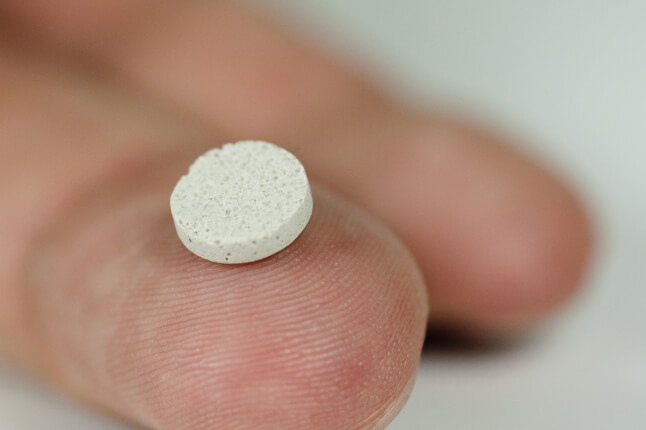News
Second-year students learn about the Harvard Undergraduate Robotics Club at Convocation (Eliza Grinnell/SEAS)
Whatever your scientific interests are, there’s a concentration at the Harvard John A. Paulson School of Engineering and Applied Sciences (SEAS) that can make it happen. Interested in cancer research? Consider bioengineering. Curious about alternative power? Try electrical engineering. Want to go into finance? Applied math can make it happen. Want to study artificial intelligence? Check out computer science.
“Solutions to problems can come from unexpected places,” said SEAS Dean David Parkes. “In your time here, I encourage you to explore, find your passion, and actively engage in your education – both in and outside of the classroom and lab.”
Parkes’s words welcomed 404 new SEAS concentrators at Convocation, the annual celebration of second-students declaring in applied math, computer science, and the four engineering disciplines. The SEAS Class of 2028 included 145 applied math concentrators (36% of the class), 131 engineering concentrators (33%) and 128 computer science concentrators (31%). Applied math, bioengineering, electrical engineering and mechanical engineering all increased their numbers compared to the Class of 2027, which had 407 total students.
“Regardless of what you’re interested in pursuing, I want you to know that you belong here,” Parkes said. “You can do this. And if you ever doubt this, remember, there is a whole community here to help and support you. We believe in you and we want you to succeed.”
Christopher Zorn was drawn to bioengineering because of how it intersects so many other disciplines. Physics, biology, chemistry, math – bioengineering taps into all of them, but with a focus on application that Zorn found very appealing.
“The thing I've been most focused on so far has been different cancer treatments,” he said. “I've been doing a lot of pure biology research related to cancer therapeutics, so I'd probably try to continue that, but maybe shift towards a more actual engineering focus to cancer.”
Zorn didn’t know he was going to study bioengineering until he arrived on campus and began to take some of the introductory courses. Justen Wen initially planned to study environmental science and engineering, but switched to bioengineering and molecular and cellular biology because he wanted to take advantage of the biotech research opportunities in Boston.
“I'm looking forward to finding a startup or an industry to join, because I think there's a lot of opportunities in the biotech industry,” Wen said. “I also think there's a very applicational side to bioengineering with regards to patient care and healthcare in general. I find that aspect very rewarding, helping people and being able to apply engineering to the greater health industry.”
Caitlyn Gonzalez knew she’d study mechanical engineering in high school, but didn’t realize how versatile a SEAS education could be before she got here. She spent this past summer studying the rainforest in Costa Rica, and being the only engineering student in the program meant adapting her coursework to an entirely new environment.
“You can bring your engineering to anything,” she said. “I want to learn how to problem solve. I think SEAS is the best place to do that.”
A student learns about the Harvard Computer Society at Convocation (Eliza Grinnell/SEAS)
Gonzalez said that some of the best engineering solutions require interdisciplinary thinking. Riya Sikand would agree, leading to her decision to study computer science and molecular and cellular biology. She hopes to apply computer science to biological research, especially drug delivery.
“One of the things that was most interesting to me in coming to Harvard was being able to engage in cutting-edge research at the undergraduate level,” she said. “In high school, I did a lot of computer science research, so coming in I knew I wanted to take my interest in CS to the next level. And then, my interest in biology sort of developed in addition to my existing interest in CS. Something that really resonates is how collaborative the CS community is, and that's something that I'm really excited to be a part of.”
Convocation didn’t just provide info on students’ concentration choices – it introduced the wide variety of extracurricular activity and resources at SEAS. Tables representing the numerous SEAS student organizations filled the main atrium of the Science and Engineering Complex, and one of the speakers following Parkes was Shriman Jha, third-year mechanical engineering concentrator, president of the Harvard Rocket Propulsion Group and lead mechanical engineer of the Harvard Satellite Team.
“Extracurriculars and clubs have been a big part of my journey at Harvard,” Jha said. “It’s something that I’ve really learned a lot from, and I really encourage you to try out different activities and clubs.”
Victoria Kauffman, a fourth-year pursuing an AB/SM in computer science, focused on getting the most out of your schedule in her remarks. Kauffman has been a teaching fellow multiple times, which she described as a way to “get significantly deeper into the class material.” She also encouraged students to take advantage of office hours, meet their TFs and get to know their classmates as soon as possible.
“A lot of the really hard problem set classes inspire the best communities,” she said. “In CS, a lot of the people I’m still friends with and take classes with are ones I met taking introductory courses. You have a lot more electives than you might realize, so trying to find courses that are interesting instead of just speed-running requirements is always a good thing.”
Topics: Academics, Applied Mathematics, Bioengineering, Computer Science, Electrical Engineering, Environmental Science & Engineering, Events, Materials Science & Mechanical Engineering, Student Organizations
Cutting-edge science delivered direct to your inbox.
Join the Harvard SEAS mailing list.
Press Contact
Matt Goisman | mgoisman@g.harvard.edu




